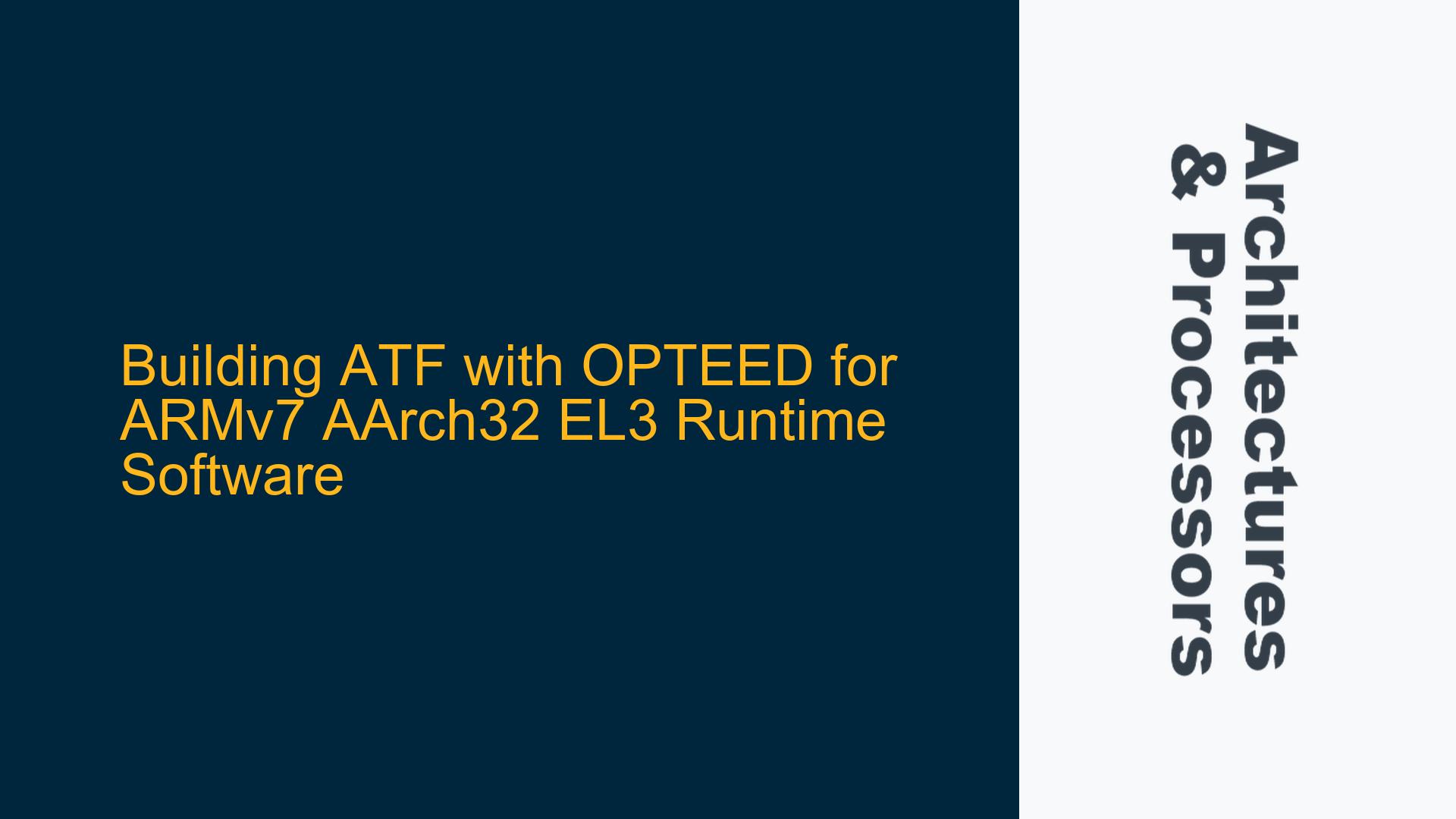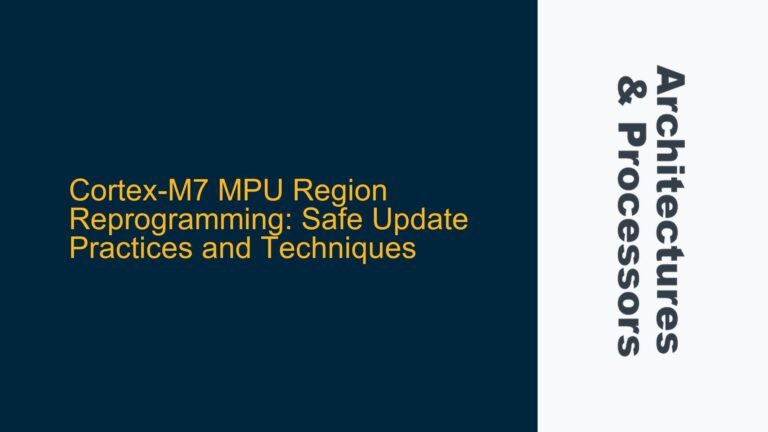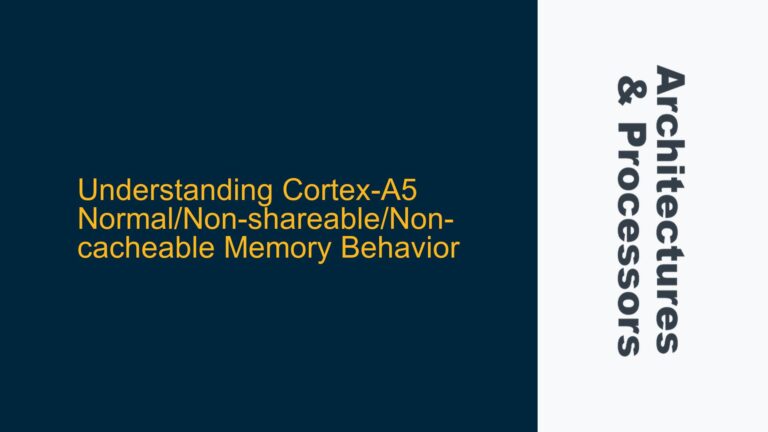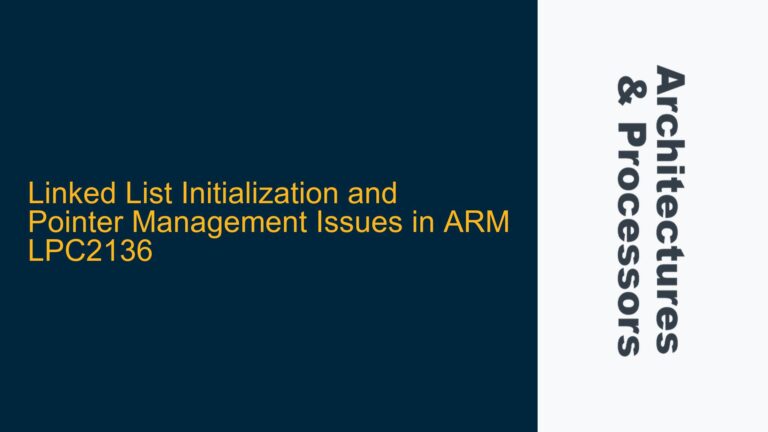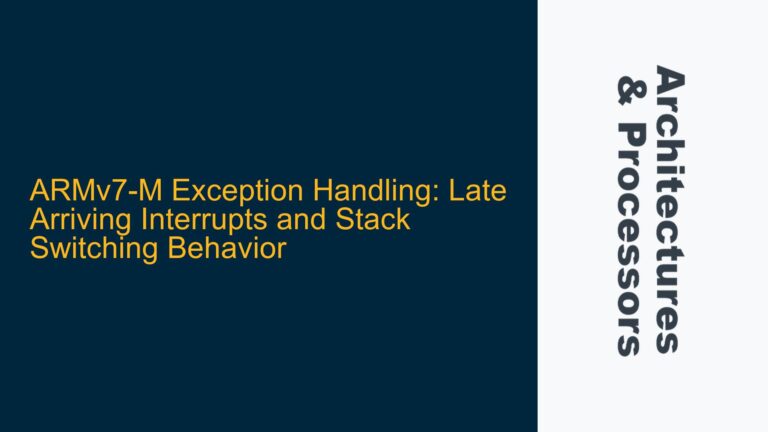ARMv7 AArch32 EL3 Runtime Software Integration Challenges with ATF and OPTEED
The integration of ARM Trusted Firmware (ATF) with OP-TEE (Open Portable Trusted Execution Environment) for ARMv7 AArch32 EL3 runtime software presents a unique set of challenges. Specifically, the issue revolves around the inability to build ATF with both PSCI (Power State Coordination Interface) services and OPTEED (OP-TEE Dispatcher) simultaneously when targeting ARMv7 CPUs. This problem is particularly pronounced when attempting to replicate a boot sequence that works seamlessly on ARMv8 architectures but fails to translate directly to ARMv7 due to architectural differences and build configuration nuances.
The boot sequence in question is as follows: BL1 (Boot Loader Stage 1) -> BL2 (Boot Loader Stage 2) -> BL31 (EL3 Runtime Software, including PSCI and OPTEED) -> OPTEE (BL32) -> BL33 (Non-secure World Boot Loader, typically U-Boot). While this sequence is well-established for ARMv8, the transition to ARMv7 requires careful consideration of how secure monitor functions, such as PSCI and OPTEED, are implemented and integrated within the ATF framework.
PSCI and OPTEED Implementation in ARMv7: ATF vs. OP-TEE
In ARMv8 architectures, ATF typically handles both PSCI and OPTEED within BL31, acting as the EL3 runtime software. However, in ARMv7, the division of responsibilities between ATF and OP-TEE is less straightforward. The primary issue arises from the fact that ATF’s AArch32 build configuration (AARCH32_SP=sp_min) allows for the inclusion of PSCI services but does not natively support the integration of OPTEED. This limitation necessitates a different approach to ensure that both PSCI and OPTEED can coexist and function correctly within the ARMv7 environment.
The key distinction lies in how secure monitor functions are partitioned between ATF and OP-TEE. In ARMv7, OP-TEE can take on a more significant role in handling PSCI services, thereby offloading this responsibility from ATF. This shift requires specific build configurations and modifications to ensure that OP-TEE is correctly initialized and that PSCI services are properly routed through OP-TEE rather than being handled directly by ATF.
Configuring ATF and OP-TEE for ARMv7 AArch32 EL3 Runtime Software
To address the challenges of integrating ATF with OPTEED for ARMv7 AArch32 EL3 runtime software, a detailed and methodical approach is required. The following steps outline the necessary configurations and modifications to achieve a successful build and boot sequence:
Step 1: Setting Up the Build Environment
The first step involves setting up the build environment to ensure compatibility with ARMv7 AArch32. This includes configuring the toolchain, specifying the target architecture, and ensuring that all dependencies are correctly installed. The build environment must be tailored to support the specific requirements of ATF and OP-TEE for ARMv7.
Step 2: Modifying ATF Build Configuration
The ATF build configuration must be modified to support the inclusion of OP-TEE as BL32. This involves setting the appropriate build flags and options to ensure that OP-TEE is correctly integrated into the boot sequence. The following build options are critical:
BL32=tee-header_v2.bin: Specifies the OP-TEE header binary.BL32_EXTRA1=tee-pager_v2.bin: Specifies the OP-TEE pager binary.BL32_EXTRA2=tee-pageable_v2.bin: Specifies the OP-TEE pageable binary.AARCH32_SP=optee: Indicates that OP-TEE is the AArch32 Secure Payload.BL33=u-boot.bin: Specifies the non-secure world boot loader (typically U-Boot).
These options ensure that OP-TEE is correctly recognized and initialized by ATF during the boot process.
Step 3: Implementing PSCI Services in OP-TEE
Given that OP-TEE will handle PSCI services in the ARMv7 configuration, it is essential to ensure that the necessary PSCI functions are implemented within OP-TEE. This involves modifying the OP-TEE source code to include the required PSCI handlers and ensuring that these handlers are correctly registered with the ATF framework.
Step 4: Ensuring Proper Initialization and Handoff
The initialization sequence must be carefully managed to ensure that control is correctly handed off between ATF and OP-TEE. This involves verifying that the OP-TEE binaries are correctly loaded and initialized by ATF and that the handoff to OP-TEE occurs without issues. Additionally, the handoff from OP-TEE to the non-secure world (BL33) must be seamless, ensuring that the system boots correctly into the non-secure environment.
Step 5: Testing and Validation
Once the build and configuration steps are complete, thorough testing and validation are required to ensure that the system functions as expected. This includes verifying that PSCI services are correctly handled by OP-TEE, that the boot sequence proceeds without errors, and that the system is stable and secure.
Step 6: Debugging and Troubleshooting
In the event of issues during the build or boot process, a systematic approach to debugging and troubleshooting is essential. This involves analyzing log outputs, verifying the correctness of the build configuration, and ensuring that all components are correctly integrated. Tools such as JTAG debuggers and serial console outputs can be invaluable in identifying and resolving issues.
Step 7: Optimizing Performance and Security
Once the system is functioning correctly, attention should be turned to optimizing performance and security. This includes fine-tuning the configuration of ATF and OP-TEE to ensure that the system operates efficiently and that all security requirements are met. This may involve adjusting memory mappings, optimizing PSCI handlers, and ensuring that all security features are correctly enabled.
Step 8: Documentation and Maintenance
Finally, it is crucial to document the entire process, including the build configuration, modifications, and any issues encountered. This documentation will be invaluable for future maintenance and updates, ensuring that the system remains stable and secure over time.
Conclusion
Integrating ATF with OPTEED for ARMv7 AArch32 EL3 runtime software is a complex but achievable task. By carefully configuring the build environment, modifying the ATF build configuration, implementing PSCI services in OP-TEE, and ensuring proper initialization and handoff, it is possible to replicate the successful boot sequence used in ARMv8 architectures. Thorough testing, debugging, and optimization are essential to ensure that the system functions correctly and securely. With the right approach, ARMv7 systems can benefit from the same robust and secure boot sequence as their ARMv8 counterparts.
